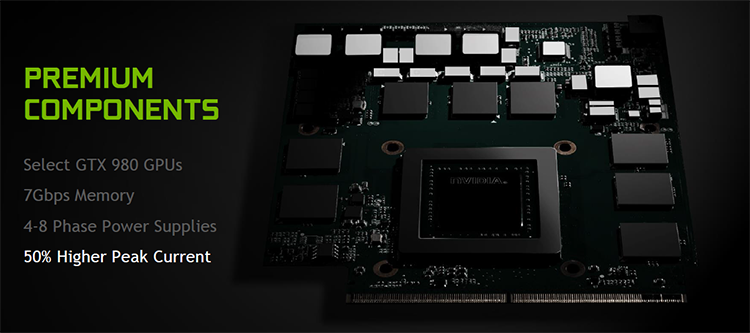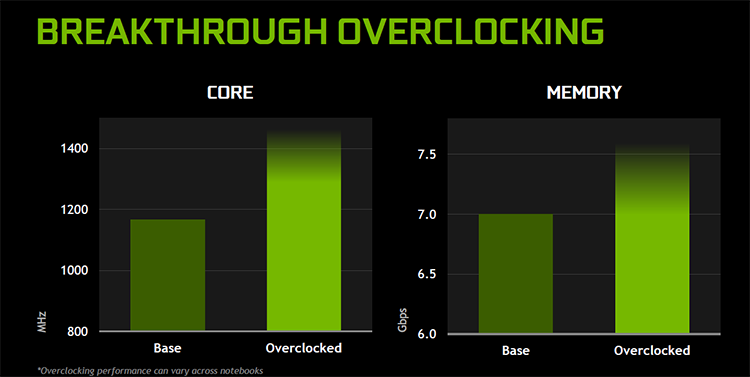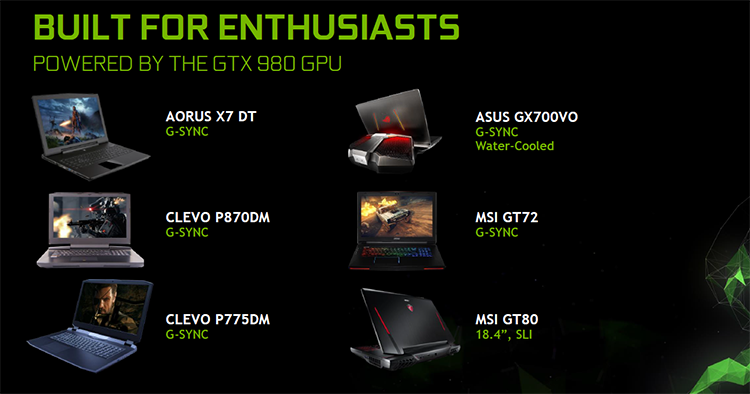Nvidia has been promoting the relevance of mobile GPUs for as long as I can remember. Historically the performance delta between the best desktop and mobile GPUs has been large enough for any serious gamer to scoff at the potential of playing the latest titles on a laptop. But recent advancements in energy efficiency, particularly with the Maxwell architecture, have lead to a closing of this gap.
Desktops will always be faster because of the ability to house multiple cards in a system, but laptop performance has come on a long way. This assertion is further reinforced with the mobile GPU being launched today, the GeForce GTX 980.
Yes, you read that correctly; Nvidia is launching the GTX 980 (non-M) today for performance laptops. So why the departure from the M naming convention and what does this mean for the gamer?
This headline mobile GPU has the exactly the same specifications as its desktop brethren released a year ago. This means a full implementation of the GM204 die, so 2,048 cores operating at a base 1,126MHz core and 1,216MHz boost, helped on by 4GB of GDDR5 humming along at 7,010MHz.
The GTX 980 has been subsequently bested by the GTX 980 Ti and Titan X on the desktop, of course, but it remains a fast, fast GPU. Transferring such performance into the mobile space requires the power envelope to be reduced significantly, to around 100W, and Nvidia achieves this by selecting the very best GM204 silicon and adjusting voltage accordingly.
Nvidia reckons the new GTX 980 is approximately 35 per cent faster than the GTX 980M that it replaces at the top of the mobile stack. Performance is practically analogous with the desktop part, as you would expect, though it does fall off a few per cent if the supporting Intel CPU cannot muster the same throughput as an overclocked K-series processor on the desktop.
In concert with Intel opening up overclocking on the latest slew of mobile Skylake processors aimed at the enthusiast, Nvidia is also enabling laptop partners to further increase the speed of the GTX 980 through overclocking. Frequency potential is similar to a desktop card, according to the company, meaning it's possible to gain an extra 10-20 per cent through some basic overclocking, should the partner support it. Such mileage will vary with the form factor and quality of cooling employed by the laptop manufacturer.
Though announced today, select partners will be retailing GTX 980-toting models from next month onwards, replacing incumbent GTX 980M GPUs with this new, more powerful card.
All are G-Sync capable, too, which makes sense on premium gaming machines. MSI, for example, is updating the behemoth GT80 laptop to feature two GTX 980 GPUs in SLI, bringing genuine 4K and VR potential to a semi-portable form factor. We expect to see the more restrained GTX 980-based enthusiast laptops start at £1,500 or so.
Is the 30 per cent-plus uplift over the already-fast GTX 980M enough to whet your appetite and prime the wallet ready for some serious mobile gaming thrills and spills?
















